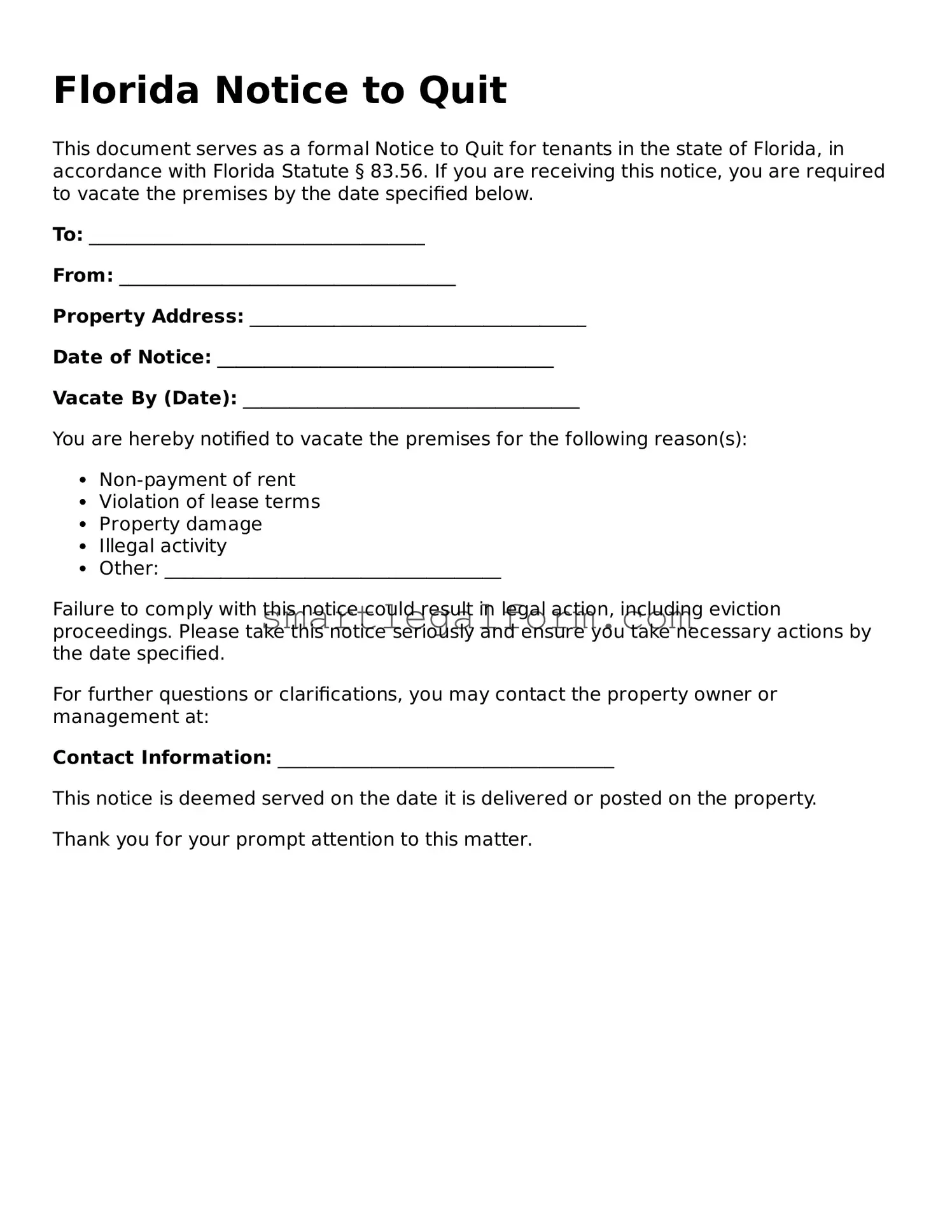Florida Notice to Quit
This document serves as a formal Notice to Quit for tenants in the state of Florida, in accordance with Florida Statute § 83.56. If you are receiving this notice, you are required to vacate the premises by the date specified below.
To: ____________________________________
From: ____________________________________
Property Address: ____________________________________
Date of Notice: ____________________________________
Vacate By (Date): ____________________________________
You are hereby notified to vacate the premises for the following reason(s):
- Non-payment of rent
- Violation of lease terms
- Property damage
- Illegal activity
- Other: ____________________________________
Failure to comply with this notice could result in legal action, including eviction proceedings. Please take this notice seriously and ensure you take necessary actions by the date specified.
For further questions or clarifications, you may contact the property owner or management at:
Contact Information: ____________________________________
This notice is deemed served on the date it is delivered or posted on the property.
Thank you for your prompt attention to this matter.
